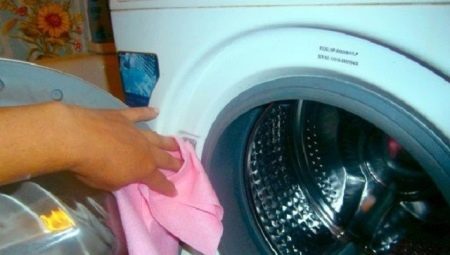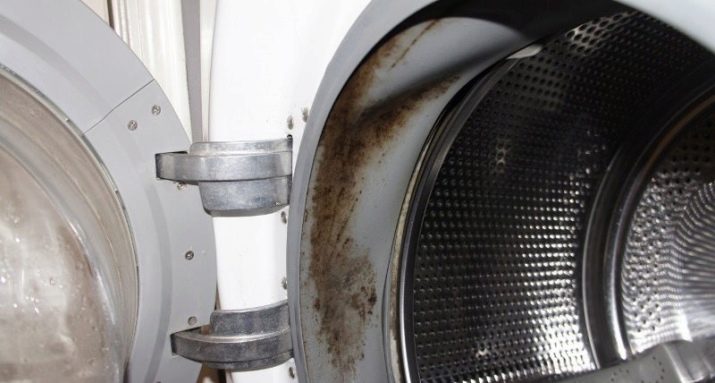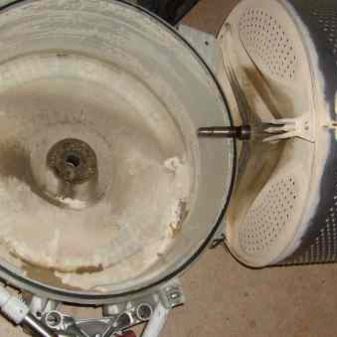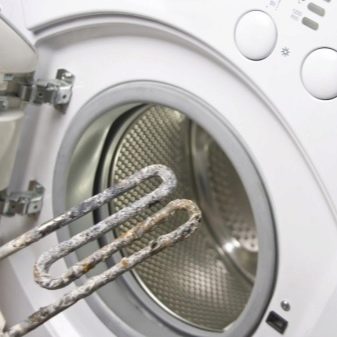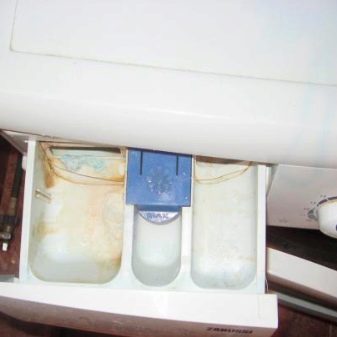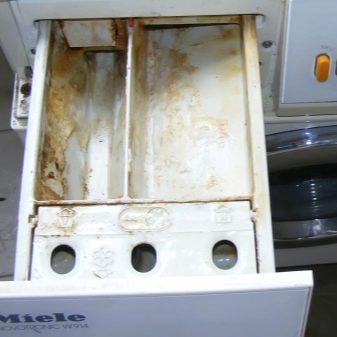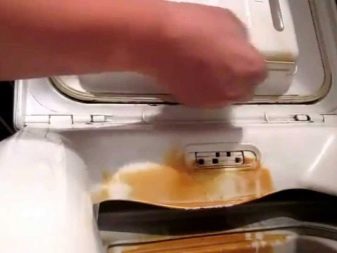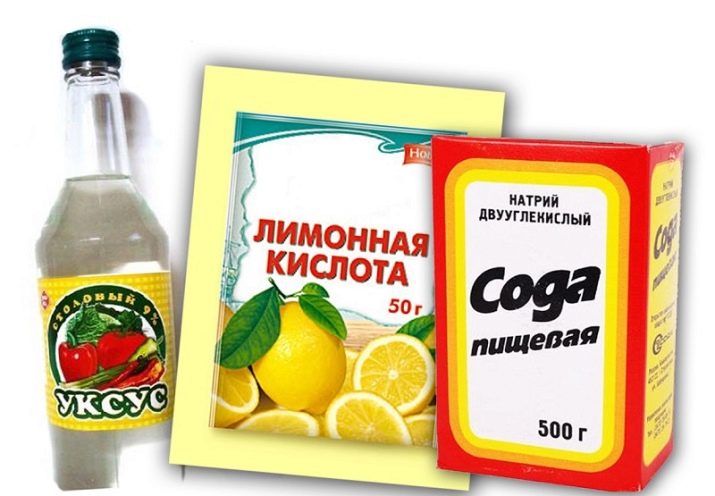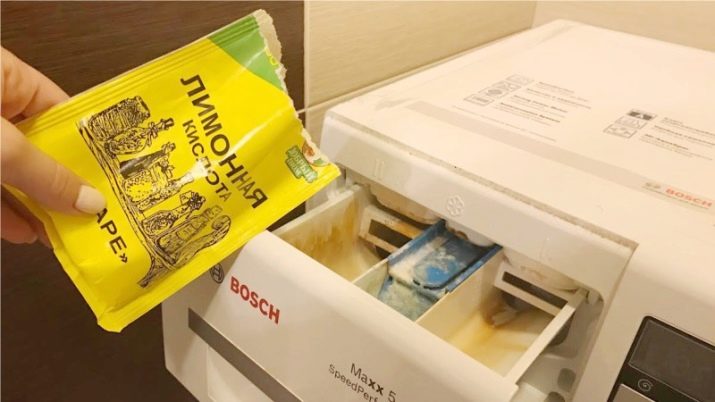Modern washing machines have become a great helper for housewives. After all, doing the washing of various types of linen and clothes in the automatic mode, they save us both time and effort. And many types of particularly corrosive pollution can not be washed by hand at all. However, the machine-machine needs timely cleaning and maintenance, because its parts are constantly in contact with water, contaminated things and detergents.
Types of pollution
If your washing machine serves you for more than a month and is used regularly by you, you can already notice with the naked eye how plaque or dirt accumulates on some parts of it. What can we say about the faithful assistants who have been working for several years. Although the automatic machine helps to rid the laundry and clothes of stains and dirt, it itself is not at all insured against sedimentation and accumulation of various contaminants inside and outside.
Types of pollution that you may encounter when you examine your washing machine:
- Whitish smudges or yellowness on the body. Such traces are left by particles of detergents or soap suds that have fallen on the machine body. In many cases, the washing machine is in the bathroom, and its surface is constantly in contact with steam and moisture. These factors lead to the formation of traces of detergents on the body. In addition to the fact that the appearance of the machine itself is significantly deteriorated, such contaminants eventually erode into the body, leading to yellowing of the plastic itself. In addition, the areas affected by soap stains acquire an unpleasant odor and can become moldy.
- Traces of scale on the drum. It is formed and gradually accumulates on the inner surfaces of the washer due to the minerals and salts contained in the water. The higher the hardness of tap water, the more active during washing at high temperature mineral substances are evaporated, settling on the walls of the drum. If such a plaque is not removed in time and settles on the drum in large quantities, it may even cause the washing machine to break, stopping the drum during operation.
- Traces of detergent in the powder compartment. Means for washing is not always well washed out of the compartment. Depending on its shape and design, the undissolved powder or washing gel can become clogged in corners, forming a viscous mass there. During subsequent washings, such accumulations may increase. Unwashed powder may slowly corrode the plastic parts of the compartment, and in such places mold will eventually take root.
- Traces of rust. Rust can damage the metal parts of the washing machine that come into contact with water. The surface of the drum is especially susceptible to this if the machine is not subjected to proper drying.
- Damage to mold and fungus. Such microorganisms adore a moist and warm environment, so they feel great in the bathroom. Mold and fungus can form on both external surfaces and internal parts. In addition to an unpleasant appearance, these microorganisms can be harmful to health.
External cleaning
The problem of the external surface of the washing machine is the formation of soap stains and stains, as well as mold or mildew. It is best to apply preventive measures. They consist in regular wiping the machine body with a wet and dry cloth.Using a damp sponge or a piece of soft cloth, you can get rid of traces of powder on the body, as well as remove mold. Dry cloth to wipe the plastic to remove moisture and water droplets.
This simple job will take 2-3 minutes, but if you do it regularly as it gets dirty, you can protect the machine from more serious pollution.
If on the case there are already yellowish stubborn stains, fungus or mold, wiping with a weak acetic solution will help:
- 1 tsp 6% of apple cider vinegar is dissolved in a liter of water. The sponge moistened in the solution should be wiped on the external surfaces of the machine.
- Wait about five minutes, then wipe all surfaces with a damp sponge or cloth moistened with plain warm water.
- Dry the case with a dry cloth.
We clean inside
Wash the washer inside, get rid of the smell, dirt, scale and mold will help simple and affordable tools. These methods are tested by the time and experience of hostesses and had a successful application to remove similar contaminants in the home long before modern chemical means appeared. Surely you will not be difficult to find in the kitchen soda, vinegar, citric acid. These simple substances are good deliverers from musty smell, settled dirt, mold and other troubles that hit the inside of the machine automatic.
To clean the drum from scale and get rid of the rotten smell, you need to use citric acid.
To do this, you need 50 g of acid powder, which you can pour directly into the drum or add to the tray for washing powder. Next, you need to run any wash cycle, which will take about an hour and the water temperature in it will be 60-70 degrees. Also put an additional rinse mode to rinse the drum well.
Citric acid has weak whitening properties, it is very refreshing, so that the above procedure can be carried out by putting laundry into the drum. Things, of course, should be light or white.
You can clean the washer inside with table vinegar and bleach. 2 cups of apple cider vinegar should be poured into the liquid compartment. Run the washing program at 80 degrees. After the end of the program, bleach should be poured into the tray and the short program should be restarted. The bleach will remove the sour smell of vinegar and wash the vinegar dissolved contaminants. After you should put a rinse cycle for the final cleaning of the drum.
Wipe visible dirt from the machine body and drum will help gruel from soda.
Baking soda should be mixed with water to obtain a mixture with a consistency resembling liquid sour cream. Soda in this dissolved form Will not scratch or damage plastic or metal surfaces. Sponge dipped in the resulting soda slurry, wipe the surface of the machine. Wash off the soda with a wet, clean sponge or start rinsing.
The tray for powder and detergent also needs regular washing, cleaning and drying. As mentioned above, undissolved laundry detergent is often clogged in different parts of this tray. Remove the powder tray and rinse it thoroughly with warm water. Using a brush or sponge, wipe its surface by removing the adhered coating. Clean out undissolved powder from hard-to-reach places with an old toothbrush.
If plaque from detergent is not washed off with a sponge, moisten it with a solution of vinegar or use diluted soda.
Prevention
In addition to regular and timely cleaning of the washing machine, it is very important to follow the rules of care and operation, which are essential reduce the degree of contamination of its parts and surfaces:
- Clean the inside and outside of the machine thoroughly. Do not leave water or moisture drops.
- Try to regularly air the room in which your machine is located.
- After each wash, rinse the powder tray well. Wipe and dry it.
- After washing, even if you rubbed the drum, do not close the door for a while. It is generally better to keep the door of the washing machine ajar if it does not bother anyone in this position and there are no animals in the house that could get inside.
And now we recommend to watch the video in which the housewife will tell you from personal experience about how to properly monitor the washing machine.
